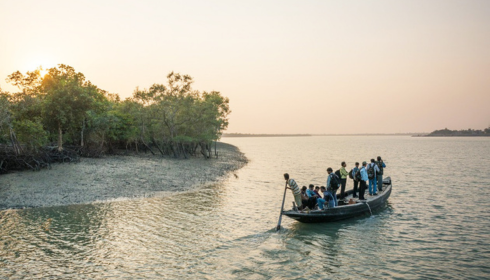
If you are an avid nature lover seeking a unique and adventurous getaway, a sundarban trip should be at the top of your travel list. Located in the southern part of West Bengal, India, and extending into Bangladesh, the Sundarbans is the largest mangrove forest in the world. Famous for its rich biodiversity, pristine waterways, and the elusive Royal Bengal tiger, this destination promises an unforgettable experience for explorers, wildlife enthusiasts, and photographers alike.
Why Choose a Sundarban Trip?
A Sundarban trip offers more than just sightseeing. It is an immersive journey into one of the most ecologically significant regions of the world. From dense mangrove forests to intricate river networks, the landscape is a haven for wildlife, including saltwater crocodiles, spotted deer, and a variety of migratory birds. For those looking to reconnect with nature, this forest provides a tranquil escape from city life.
Besides wildlife, the region is home to unique local communities whose lifestyles are intricately linked with the forest. Experiencing their culture, traditional fishing practices, and folklore adds a rich layer of authenticity to your visit.
Best Time to Visit
Timing your trip is crucial for the best experience. The ideal period for a Sundarban trip is between October and March when the weather is pleasant, and the likelihood of spotting wildlife is higher. Summers can be humid and rainy, making navigation through the river networks challenging. Visiting during the dry season ensures smoother boat rides and more comfortable accommodations.
Popular Attractions in the Sundarbans
1. Sajnekhali Wildlife Sanctuary
This sanctuary is one of the most visited spots in the Sundarbans. It houses a wide variety of flora and fauna and is known for its well-maintained watchtowers, which allow visitors to observe the wildlife safely. Bird watchers will be delighted by the presence of kingfishers, herons, and eagles.
2. Sudhanyakhali Watchtower
For tiger enthusiasts, the Sudhanyakhali watchtower is a must-visit. Perched strategically, it offers panoramic views of the forest and the surrounding creeks, increasing your chances of spotting the elusive Royal Bengal tiger.
3. Godkhali and Dobanki
These riverfront areas provide authentic boating experiences through narrow creeks lined with dense mangroves. The serene waters and lush greenery make these spots perfect for photography and nature walks.
Activities to Enjoy
A Sundarban trip is not just about sightseeing; it’s an adventure in itself. You can embark on guided boat safaris, go for early morning birdwatching tours, and enjoy fishing experiences with local fishermen. Some tours also offer village visits where travelers can interact with locals and understand the traditional ways of life that have thrived alongside the forest.
Nature photography is another highlight. The interplay of light through the mangrove canopies, the reflections on water, and the diverse wildlife provide endless opportunities for stunning photographs.
Tips for Travelers
- Book with certified tour operators to ensure safety and compliance with forest regulations.
- Carry lightweight clothing and waterproof gear, as the region can be humid and occasionally wet.
- Respect wildlife and local customs. Avoid feeding animals or disturbing their habitats.
- Stay hydrated and protected from mosquitoes, especially during boat rides.
Conclusion
A Sundarban trip is a journey that combines adventure, wildlife exploration, and cultural immersion. Whether you are an intrepid traveler or someone seeking peaceful natural beauty, the Sundarbans has something for everyone. With proper planning and a spirit of adventure, your trip can be both safe and unforgettable.


